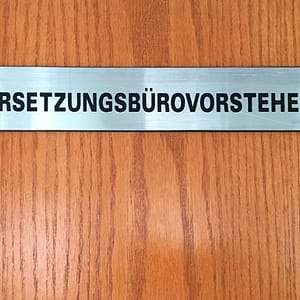Best Practices for Translation Review
Client review is an important step in the translation process that provides an additional level of quality control and ensures your brand is communicated effectively. Typically, client review occurs after your text has already passed through the translation, editing, and quality control processes, providing a final check to make sure the translated material conveys your company’s unique voice.
Who Makes a Good Reviewer?
- Your reviewer must be able to compare both source and target languages in the written form. Select someone with proficiency reading and writing in both the source and target languages, with native or near-native ability in the target language. Ideally, they should originate from and live in the country for whom the translated materials are intended.
- Your reviewer should have a high level of familiarity with the company and the content being translated. This includes knowledge of your company’s product/services offering and brand, as well as your industry.
- Your reviewer should be given access to all available reference materials. It’s important that everyone involved with the project, including translators, editors, and reviewers, are all working with the same instructions and referencing the same material.
- Your reviewer must have the time available to complete the review in a timeframe that will allow your project to stay on schedule.
- To maintain consistency, a single reviewer should be assigned for each language and content type. If you anticipate ongoing work, select a reviewer who has the capacity to work on all of your upcoming projects.
- Select someone with the technical competency to learn the platform being used for the review. While your review can be performed using a spreadsheet, web-based portals have made the process far more efficient. Take advantage of your Language Service Provider’s (LSP) technology.
Using a qualified, knowledgeable reviewer will help you obtain the greatest value from the process.
Let’s Chat!
Get in touch to speak with a member of our team.
What Should a Reviewer Look For?
Language is an art, not a science, and there may be many different interpretations of a “correct translation.” The objective of the client review is not to re-write the translated text or make subjective changes, but to make sure your brand, company, and product/services offerings are communicated effectively.
- Your reviewer should pay special attention to the way industry-specific or technical terminology is being used. He/she should provide any suggestions that might help improve the accuracy of the translations.
- Your reviewer should make sure your company’s branding standards are being upheld and communicated effectively to the target market. He/she must review the content from the perspective of the intended audience. Words or expressions that are common in one language do not always communicate the same message well in another.
The process works best if your reviewer understands the objective up front. One of the largest challenges to the review process is the last-minute introduction of stylistic or preferential changes. At this stage, such edits do not help improve overall quality and may put the project behind schedule. Your reviewer should clearly understand that their role is to address the points above, and they must have the time and ability to adequately address these areas in a way that leverages their knowledge of the company and adds value.
If you are working with complex projects that involve multiple languages, it’s essential to stay organized. Reviewers should have a clear timeline, a contact person for questions, and be given proper instructions for using the review tools. Your LSP has the experience to coordinate the process. Take advantage of their expertise, and partner closely. In many cases your LSP can even manage the review process for you!
Resources
It’s helpful if linguistic guidelines are established from the onset of the project with the development of a glossary and/or style guide. A glossary compiles your company’s key terminology in your source language and the approved translations for that terminology in your target language(s), while a style guide provides rules for voice, tone, style, and formatting preferences. Developing these materials upfront helps ensure your translators are using your pre-approved terminology and adhering to your preferred style from the start, resulting in less back and forth later on.
Do note, however, that style and formatting conventions differ from country to country and in some cases style guides need to be modified to accommodate these differences.
Featured Services
Learn more about…
The Process
As language technology platforms have grown more robust, client review has become easier. At Eriksen, we offer our clients the use of memoQ WebTrans for client review. Our browser-based translation and review portal enables you to review materials without obtaining a license or installing software. The portal is fully integrated with the memoQ translation environment used by our translators and editors, so your reviewers have full access to translation memories, glossaries, and other resources.
After your reviewer has completed his/her review, we will validate the requested changes to ensure the translation is accurate, no errors were introduced, and the meaning of your text has not been altered. Any disagreements will be addressed and the final changes implemented. As a document is reviewed in the portal, the changes are immediately visible to any translator or editor working on the project, and translation memories are automatically updated through the system.
Technology has gone a long way to simplify the review process, but it still helps to take an informed approach and set the right expectations from the start. Selecting qualified reviewers who understand the process and have access to the right resources will save you time and money and ultimately produce the best results.
 Named to the 2024 Inc. 5000 list of fastest-growing companies and ranked among the world’s top 100 language service providers by CSA Research
Named to the 2024 Inc. 5000 list of fastest-growing companies and ranked among the world’s top 100 language service providers by CSA Research

